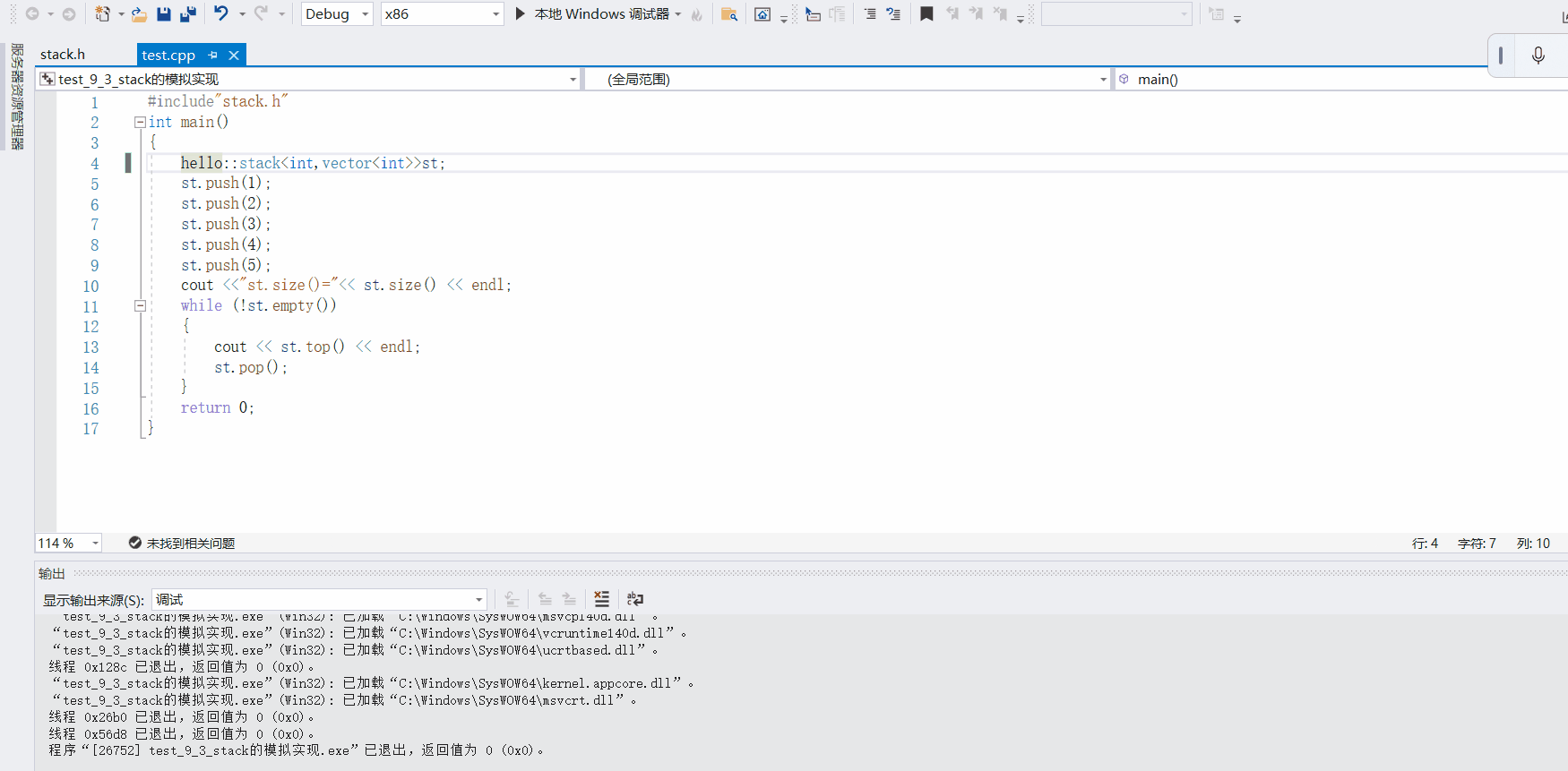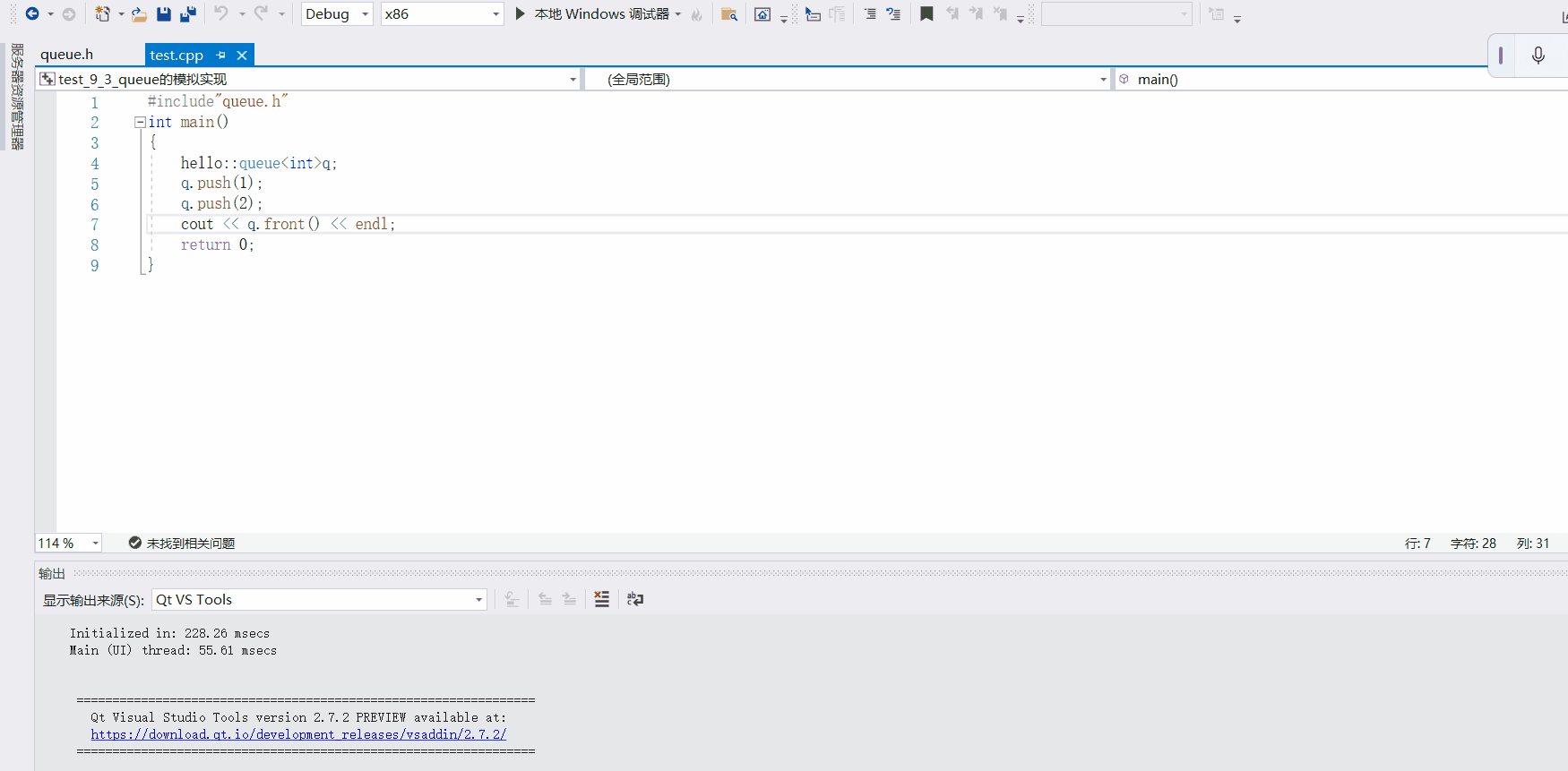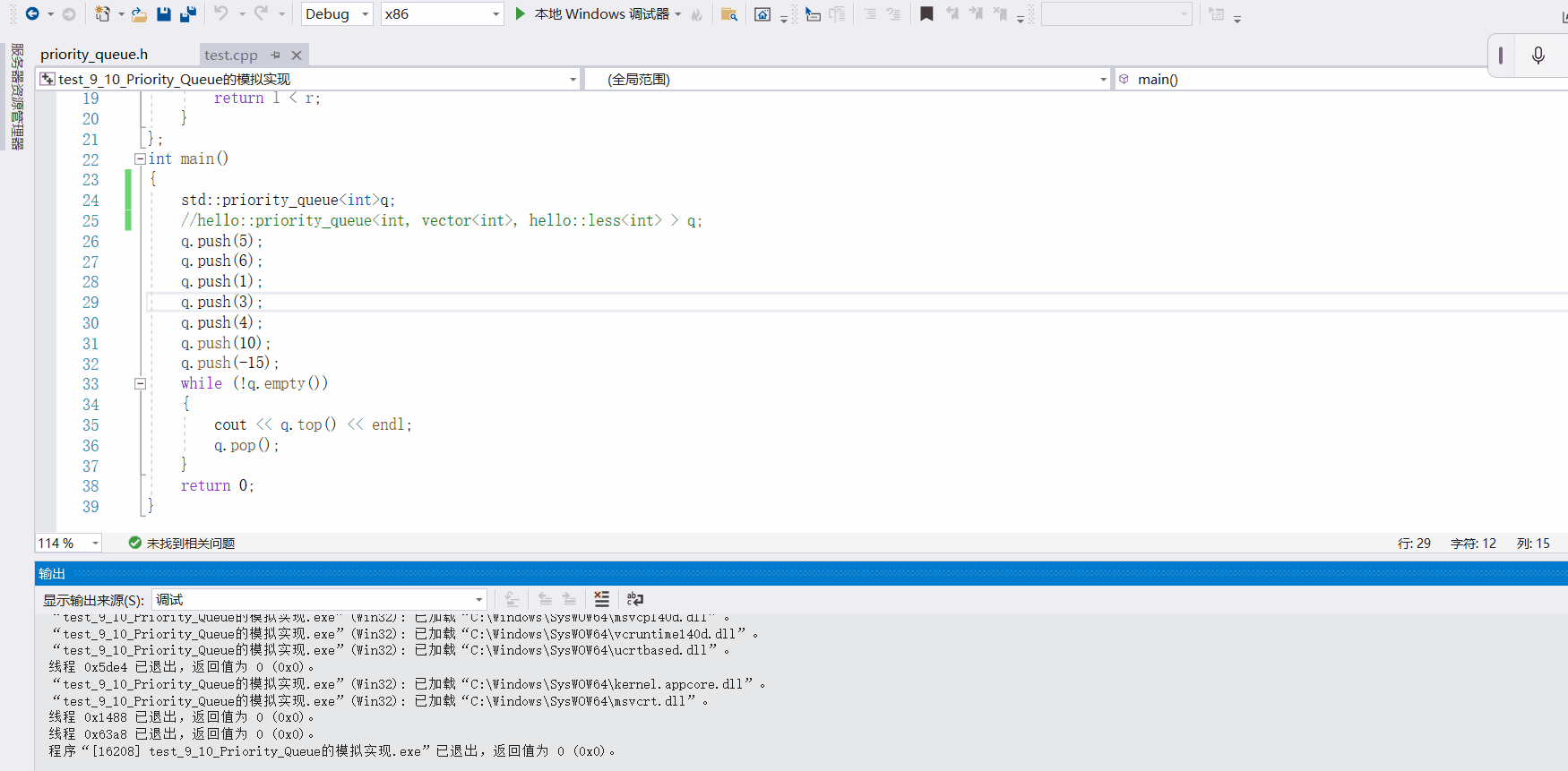stack,queue,priority_queue的模拟实现
stack的模拟实现
栈是一种先入后出的数据结构,主要具有以下接口

上面就是stack(栈)的主要功能了,而这次我们要利用自己写的栈来实现这些结果
在上面的例子中我们利用系统提供的stack实现了对栈的push,pop,top,size,empty等接口,下面我们就要利用自己所写的栈模拟实现这些功能,具体的功能我会在下面代码中详细解答
namespace hello
{
template<class T, class Container = deque<T>>
class stack
{
public:
stack()
{
}
void push(const T& x)
{
_c.push_back(x);
}
void pop()
{
_c.pop_back();
}
T& top()
{
return _c.back();
}
const T& top()const
{
return _c.back();
}
size_t size()const
{
return _c.size();
}
bool empty()const
{
return _c.empty();
}
private:
Container _c;
};
}
栈的实现主要是借助其它容器进行实现的,内容非常简单,下面我们来看一下自己写的栈的功能:

队列的模拟实现
队列是一种先入先出的数据结构,主要有以下接口:


这就是我们模拟实现的效果,它的实现和我们上面实现栈几乎是一样的,都是借助deque实现的
namespace hello
{
template<class T, class Container=deque<T>>
class queue
{
public:
queue()
{
}
void push(const T& x)
{
_con.push_back(x);
}
void pop()
{
_con.pop_front();
}
T& back()
{
return _con.back();
}
const T& back()const
{
return _con.back();
}
T& front()
{
return _con.front();
}
const T& front()const
{
return _con.front();
}
size_t size()const
{
return _con.size();
}
bool empty()const
{
return _con.empty();
}
private:
Container _con;
};
}
priority_queue的模拟实现
优先级队列是队列的一种特殊情况,它入队列顺序随意,出队列顺序按照数据的优先出队列
它底层的数据结构是数组,里面包含了一些堆的算法
在模拟实现时不论建大堆还是小堆都是可以的

它包含于头文件,主要有以下接口:

在优先级队列中有仿函数:less(降序排列),greater(升序排列),默认的话是less降序排列
仿函数:
仿函数(functor),就是使一个类的使用看上去像一个函数。其实现就是类中实现一个operator(),这个类就有了类似函数的行为,就是一个仿函数类了。
int main()
{
std::priority_queue<int>q;
q.push(5);
q.push(6);
q.push(1);
q.push(3);
q.push(4);
q.push(10);
q.push(-15);
while (!q.empty())
{
cout << q.top() << endl;
q.pop();
}
return 0;
}

如上所示,我们在系统默认提供的优先级队列中添加一群无序的数据,在我们不指定排列方式的时候他会默认以降序的方式排列,要想以升序方式排列也很简单,只需定义优先级队列时加入排列方式即可
s
t
d
:
:
p
r
i
o
r
i
t
y
q
u
e
u
e
<
i
n
t
,
v
e
c
t
o
r
<
i
n
t
>
,
s
t
d
:
:
g
r
e
a
t
e
r
<
i
n
t
>
>
q
;
std::priority_queue<int,vector<int>,std::greater<int>>q;
std::priorityq?ueue<int,vector<int>,std::greater<int>>q;
int main()
{
std::priority_queue<int,vector<int>,std::greater<int>>q;
q.push(5);
q.push(6);
q.push(1);
q.push(3);
q.push(4);
q.push(10);
q.push(-15);
while (!q.empty())
{
cout << q.top() << endl;
q.pop();
}
return 0;
}

如上图所示,即为升序排列结果,下面就来模拟实现一下,重点内容我都注释在代码中了
namespace hello
{
template<class T>
class less
{
public:
bool operator()(T& l, T& r)
{
return l < r;
}
};
template<class T>
class greater
{
public:
bool operator()(T&l,T&r)
{
return l > r;
}
};
template<class T,class Container









